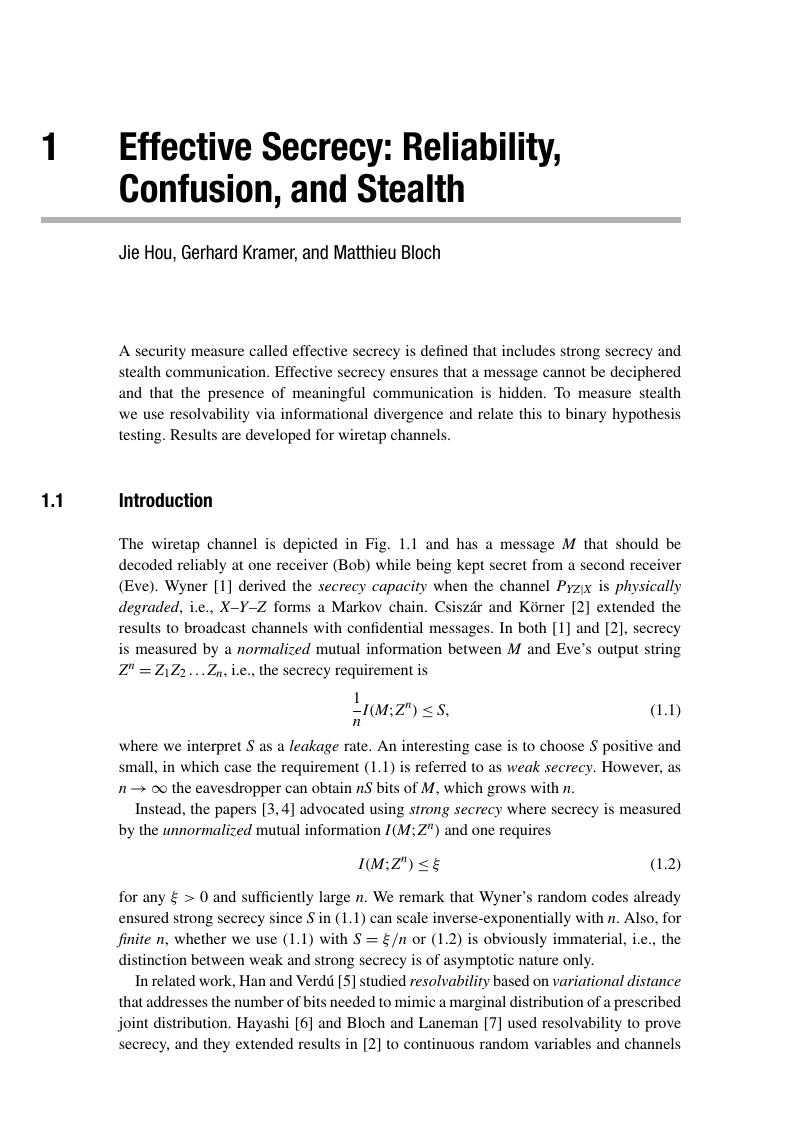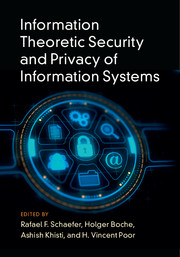Book contents
- Frontmatter
- Contents
- List of Contributors
- Preface
- Part I Theoretical Foundations
- 1 Effective Secrecy: Reliability, Confusion, and Stealth
- 2 Error-Free Perfect Secrecy Systems
- 3 Secure Source Coding
- 4 Networked Secure Source Coding
- Part II Secure Communication
- Part III Secret Key Generation and Authentication
- Part IV Data Systems and Related Applications
- Index
- References
1 - Effective Secrecy: Reliability, Confusion, and Stealth
from Part I - Theoretical Foundations
Published online by Cambridge University Press: 28 June 2017
- Frontmatter
- Contents
- List of Contributors
- Preface
- Part I Theoretical Foundations
- 1 Effective Secrecy: Reliability, Confusion, and Stealth
- 2 Error-Free Perfect Secrecy Systems
- 3 Secure Source Coding
- 4 Networked Secure Source Coding
- Part II Secure Communication
- Part III Secret Key Generation and Authentication
- Part IV Data Systems and Related Applications
- Index
- References
Summary

- Type
- Chapter
- Information
- Publisher: Cambridge University PressPrint publication year: 2017
References
- 5
- Cited by



